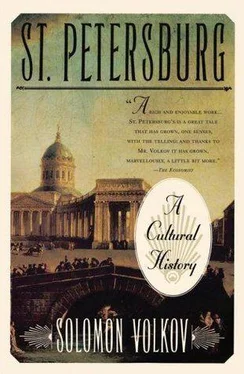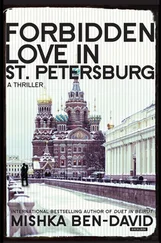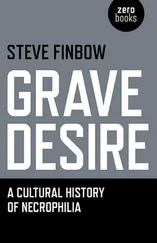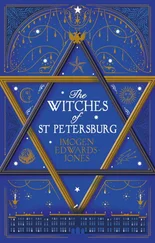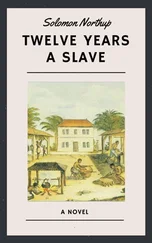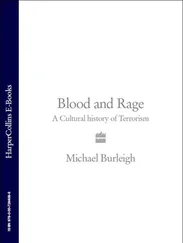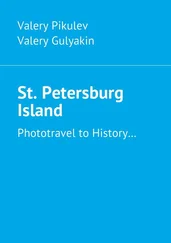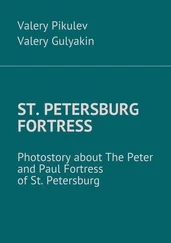Solomon Volkov - St. Petersburg - A Cultural History
Здесь есть возможность читать онлайн «Solomon Volkov - St. Petersburg - A Cultural History» весь текст электронной книги совершенно бесплатно (целиком полную версию без сокращений). В некоторых случаях можно слушать аудио, скачать через торрент в формате fb2 и присутствует краткое содержание. Город: New York, Год выпуска: 1997, ISBN: 1997, Издательство: Free Press, Жанр: Биографии и Мемуары, Культурология, на английском языке. Описание произведения, (предисловие) а так же отзывы посетителей доступны на портале библиотеки ЛибКат.
- Название:St. Petersburg : A Cultural History
- Автор:
- Издательство:Free Press
- Жанр:
- Год:1997
- Город:New York
- ISBN:978-1-451-60315-6
- Рейтинг книги:5 / 5. Голосов: 1
-
Избранное:Добавить в избранное
- Отзывы:
-
Ваша оценка:
- 100
- 1
- 2
- 3
- 4
- 5
St. Petersburg : A Cultural History: краткое содержание, описание и аннотация
Предлагаем к чтению аннотацию, описание, краткое содержание или предисловие (зависит от того, что написал сам автор книги «St. Petersburg : A Cultural History»). Если вы не нашли необходимую информацию о книге — напишите в комментариях, мы постараемся отыскать её.
Photos.
St. Petersburg : A Cultural History — читать онлайн бесплатно полную книгу (весь текст) целиком
Ниже представлен текст книги, разбитый по страницам. Система сохранения места последней прочитанной страницы, позволяет с удобством читать онлайн бесплатно книгу «St. Petersburg : A Cultural History», без необходимости каждый раз заново искать на чём Вы остановились. Поставьте закладку, и сможете в любой момент перейти на страницу, на которой закончили чтение.
Интервал:
Закладка:
The opening lines of The Bronze Horseman, depicting Peter the Great as he decides to found Petersburg, are perhaps the most popular in Russian poetry. Every year millions of Russian schoolchildren memorize them: “On the shore of empty waves He stood, filled with great thoughts, and stared out.”
This is a mythologized image, of course. But almost everything having to do with the founding of Petersburg is surrounded by legends, great and small. According to one of them, on May 16, 1703, on an island (which was called Zayachy, “Hare”) in the estuary of the Neva River, chosen because of its access to the Baltic Sea, Peter tore a halberd from a soldier’s hands, cut out two sections of peat, laid them crosswise, and announced: “The city will be here!” {11} 11 4 The history of the founding of Petersburg and the legends surrounding it are related, in particular, in P. N. Petrov, Istoriia Sankt-Peterburga s osnovaniia goroda do vvedeniia v deistvie vybornogo gorodskogo upravleniia po Uchrezhdeniiam o guberniiakh, 1703-1782 (The History of St. Peterburg from the Founding of the City to the Implementation of the Elected City Government According to Administrations of Provinces, 1703-1782) (St. Petersburg, 1885); P. N. Stolpyanskii, Kak voznik, osnovalsia i ros Sanktpiterburkh (How St. Petersburg Arose, Was Founded, and Grew) (Petrograd, 1918); M. I. Pyliaev, Staryi Peterburg (Old Petersburg), 2nd ed. (St. Petersburg, 1889); Ocherki istorii Leningrada (Sketches of the History of Leningrad), vol. 1 (Moscow and Leningrad, 1955); V. Mavrodin, Osnovanie Peterburga (The Founding of Petersburg) (Leningrad, 1983).
Then, tossing the halberd aside, Peter picked up a shovel and work began. This was the start of the six-towered fortress with the Dutch name Sankt Piterburkh, named by the tsar not after himself, as the popular misconception has it, but after his patron saint, Apostle Peter.
Another legendary image recorded in the manuscript entitled “On the conception and construction of the Ruling city of St. Petersburg,” which appeared shortly after Peter’s death, presents the eagle that suddenly appeared over Peter’s head as the foundation of the fortress was being laid. The anonymous author stressed that this was exactly what had happened when Constantinople was founded by the first Christian emperor, Constantine the Great. Peter buried in the foundation a golden ark with a piece of the remains of Holy Apostle Andrew, the first to bring Christianity to Russia.
Contemporary historians are skeptical about these legends, justly noting their propagandistic character. In 1703 Peter already was planning to proclaim the Russian Empire, which he did in 1721, taking the title “Great” along with Russian Orthodox Emperor. So imperial symbols and parallels, particularly the traditional Russian historical analogy with the “New Rome”—Constantinople—were very important to him.
In fact, Peter was not even on Zayachy Island that fateful day when the city was founded. The initial work on the small piece of land—about 750 meters long and 360 wide—was directed by Alexander Menshikov, one of Peter’s most trusted lieutenants and the future first governor of Petersburg. Prosaic facts also contradict Pushkin’s grand lines cited earlier: the area wasn’t all that “empty.” The Swedish fort of Nienschanz stood nearby and a populous fishing village was situated on the opposite shore.
One thing is absolutely clear, though—Zayachy itself was uninhabited, a miserable swampy place that would never have become the site of the future imperial capital if not for the will and vision of Tsar Peter.
What moved him? What led to that strangest of choices, later resented and dismissed by hordes of critics? And their argument was sound—that for geographical, climatic, strategic, commercial, and nationalistic reasons, the mouth of the Neva was no place for the new capital of Russia or any large city.
The answer is probably rooted as much in Tsar Peter’s psychology as in the complex political and economic reality of early-eighteenth-century Russia. Peter was born in 1672, the fourteenth child of Tsar Alexei of the Romanov dynasty, and was eventually crowned in 1696 in Moscow, then the capital of all Russia, inheriting an enormous, relatively backward country. He believed it needed radical perestroika or “restructuring” and, therefore, maximal increase in contacts and trade with the West. In many ways, Russia was already prepared for the rule of a reform-minded tsar. It simply did not expect that the new autocrat would be a person with Peter’s extraordinary character and habits. {12} 12 5 The basic sources for the description of Peter the Great were V. O. Klyuchevsky, Sochineniia (Works), 9 vols., vol. 4 (Moscow, 1989); S. M. Solovyov, Chteniia i rasskazy po istorii Rossii (Readings and Stories in Russian History) (Moscow, 1990); K. Shmurlo, Petr Velikii v otsenke sovremennikov i potomstva (Peter the Great in the Evaluation of His Contemporaries and Descendants) (St. Petersburg, 1912); M. Ustryalov, Istoriia tsarstvovaniia Petra Velikogo (History of the Reign of Peter the Great) (St. Petersburg, 1859-1863); N. I. Pavlenko, Petr Velikii (Peter the Great) (Moscow, 1994); V. V. Mavrodin, Rozhdeniie novoi Rossii (Birth of the New Russia) (Leningrad, 1988); E. V. Anisimov, Vremia petrovskikh reform (The Time of Petrine Reforms) (Leningrad, 1989).
Peter grew up to be tall (over six feet seven inches) and strong. He could easily roll up a silver plate or cut a bolt of cloth in the air. He was tireless in all his pursuits, businesslike, with an insatiable thirst for knowledge. He longed for sea air. This was exactly what Russia needed as well. Let’s not forget it had long struggled to gain access to the sea, with its tempting promises of lucrative trade with foreigners. But few of the Russian boyars—mostly the old noble councillors who surrounded the young tsar—expected Peter to take up the work of perestroika with such passion, demolishing along the way all the proprieties and customs of his ancestors. Muscovite tsars were supposed to sit enthroned majestically in the Kremlin, not imitate—as Peter soon began doing—the crude manners and habits of Dutch or German skippers and craftsmen.
Peter turned out to be an amazing monarch, and not only by Russian standards. He seemed to know everything and be able to do anything. As a young man he had mastered fourteen trades, including woodworking, carpentry, and shoemaking. He considered himself a good surgeon. They say Peter left a whole sack of teeth he had pulled; he loved to practice dentistry, terrorizing his courtiers. But the tsar prided himself particularly on being the best shipbuilder in the land. The launching of every new ship was also an excuse for a great drinking bout. Usually stingy, Peter spared no expense on these occasions.
As no Russian monarch before or after him, Peter was full of contradictions and paradoxes. On occasion he could be merry, gentle, and kind. But more often he was horrible in his wrath, frighteningly unpredictable, and needlessly cruel, personally torturing his enemies in hidden chambers. Of course, he had to fight for power and sometimes for his life. Barbaric incidents like the Moscow uprising of the Russian irregular army in 1682, when soldiers with fearsome pikes speared many of Peter’s relatives and tore them apart before his eyes, must have greatly influenced his character and behavior. Still, his dominant trait was unlimited confidence in his own righteousness. As a true Russian autocrat, he considered himself the absolute sovereign whose subjects were deprived of every right. By providential design, he could not be wrong; therefore his every wish had to be obeyed, no matter what the cost.
At times Peter seemed to be a simple, sincere, and accessible man. But he also perceived himself as a demiurge, a kind of divine actor whose stage was not only Russia but all Europe and more. Not for nothing did the chancellor, Count Golovkin, upon bestowing the honorific “the Great” on Peter speak glowingly of a Russia that had “come out of the Darkness of Ignorance onto the Theater of Glory of the whole world” under the emperor’s leadership. Peter was challenging, demanding, deliberately outrageous. This love of the grand gesture marked all his actions. A dramatic change of form was no less important than a change of content as far as Peter—the actor on the world stage—was concerned. In fact, he was apparently convinced that the form often determined the content. This conviction of Peter’s was to become an integral part of the entire future Petersburgian culture.
Читать дальшеИнтервал:
Закладка:
Похожие книги на «St. Petersburg : A Cultural History»
Представляем Вашему вниманию похожие книги на «St. Petersburg : A Cultural History» списком для выбора. Мы отобрали схожую по названию и смыслу литературу в надежде предоставить читателям больше вариантов отыскать новые, интересные, ещё непрочитанные произведения.
Обсуждение, отзывы о книге «St. Petersburg : A Cultural History» и просто собственные мнения читателей. Оставьте ваши комментарии, напишите, что Вы думаете о произведении, его смысле или главных героях. Укажите что конкретно понравилось, а что нет, и почему Вы так считаете.
